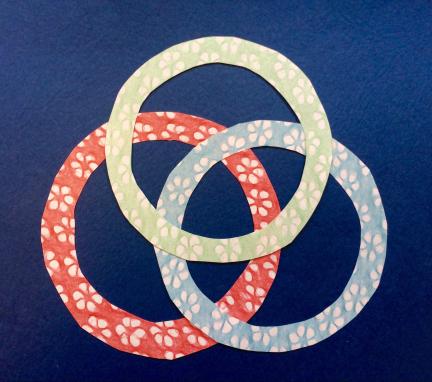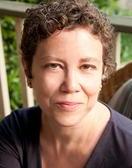
Three ring Venn diagram made from origami paper
" data-orig-size="2768,2449" sizes="(max-width: 432px) 100vw, 432px" data-image-title="Three Ring Venn Diagram" data-orig-file="https://onbeingboth.files.wordpress.com/2017/04/three-ring-venn-diagram-e1491488494438.jpg?w=432&h;=382" data-image-meta="{"aperture":"0","credit":"","camera":"","caption":"","created_timestamp":"0","copyright":"","focal_length":"0","iso":"0","shutter_speed":"0","title":"","orientation":"0"}" width="432" data-medium-file="https://onbeingboth.files.wordpress.com/2017/04/three-ring-venn-diagram-e1491488494438.jpg?w=432&h;=382?w=300" data-permalink="https://onbeingboth.wordpress.com/three-ring-venn-diagram/" alt="Three Ring Venn Diagram" height="382" srcset="https://onbeingboth.files.wordpress.com/2017/04/three-ring-venn-diagram-e1491488494438.jpg?w=432&h;=382 432w, https://onbeingboth.files.wordpress.com/2017/04/three-ring-venn-diagram-e1491488494438.jpg?w=864&h;=764 864w, https://onbeingboth.files.wordpress.com/2017/04/three-ring-venn-diagram-e1491488494438.jpg?w=150&h;=133 150w, https://onbeingboth.files.wordpress.com/2017/04/three-ring-venn-diagram-e1491488494438.jpg?w=300&h;=265 300w, https://onbeingboth.files.wordpress.com/2017/04/three-ring-venn-diagram-e1491488494438.jpg?w=768&h;=679 768w" class="alignnone wp-image-6175" data-large-file="https://onbeingboth.files.wordpress.com/2017/04/three-ring-venn-diagram-e1491488494438.jpg?w=432&h;=382?w=450" />By Susan Katz Miller
For Being Both, I interviewed Ivan Kruh about his Jewish and Christian and Buddhist family. Today, more than five years later, Ivan updates us on how his family goes beyond both, to being all, in the context of interspirituality. Not all interfaith families become interspiritual families, and not all interspiritual people come from interfaith families. But, there is an overlap. Ivan sees his family as part of a larger circle encompassing all three of the family religions represented in the Venn Diagram above. Here’s his guest post:
It is funny how some things that feel so organic to one family can be so radical within the larger society. My wife and I found that people thought we were nuts when we both went half-time at work after our son was born. And they thought we were even crazier when we told them we planned to raise him as a Jewish-Buddhist-Christian. But my family has three traditions – I am Jewish and also a Buddhist (what some people call a “Jew-Bu”), and my wife is a Christian. The decision to raise him “all” – connected to all three of these traditions – feels so natural to us. As Susan’s book and blog attest, the number of interfaith families choosing to raise their child with connections to more than one religion is growing. But we are also raising him “all” in a deeper way. Because beyond being an interfaith family, we consider ourselves an interspiritual family.
The term “interspirituality” was coined by the Catholic monk Brother Wayne Teasdale to reflect our human potential to see and be transformed by the shared spiritual truths that form the core of all great religious traditions. For example, my wife and I believe the following truths are at the core of the practices, rituals, songs and traditions of our three religions, and that they form the heart of what we want our son to understand:
- “See yourself clearly in order to forget your self;”
- “Love and serve all beings and your world;”
- “Live with simplicity;”
- “Walk humbly with your God.”
Interspirituality does not equate all religions, but sees each as a particular way of expressing these kinds of truths in much the same way different languages could be used to explain the same experience. Clarifying that religions are each merely fingers pointing to the proverbial moon, interspirituality allows individuals to live with strong, deep connection to one or more traditions, yet open from traditional boundaries to include, hold, respect, and benefit from the full family of human spiritual traditions.
My wife and I discovered we were interspiritual early in our dating relationship, though neither of us knew there was a term to describe what was unfolding. As we talked about our religious study, spiritual practices and the insights that came out of both, we found (once we each did a whole lot of explaining of vocabulary) that we believed many of the same things and had a very similar vision about what it takes to live a good life. We began to share our spiritual practices with one another and discuss our experiences. And through these practices and conversations we each developed a true appreciation for the other’s religion while deepening our relationships with our own religion. We each experienced great spiritual nourishment in this process. It became obvious that we could each be devoted to our own different spiritual paths and simultaneously devoted to one another. We were married by a Rabbi and a Minister in a ceremony that joyfully reflected all of this.
And now we have a four-year-old son. Raising him within our interspiritual relationship means that we seek to raise him to also see the universal truths that form the core of his Jewish, Christian and Buddhist heritages. We hope to raise him like a strong tree – firmly rooted in the sacred ground of our three traditions, but with branches that open to all religious and spiritual paths so that he can find his own way toward truth and sacredness.
We know that this is not the view or intention of most interfaith parents. But it works well for us. Take, for instance, the painful conflicts some interfaith parents experience during holiday seasons, like the approaching Easter/Passover season. Some couples worry about whether to host a seder and dye easter eggs in the same home, or how to talk to their children about the Israelite Exodus at the same time they are talking about the resurrection of Jesus. The interspiritual family does not see the confluence of Easter and Passover as a dilemma at all – but a fortuitous opportunity to explore two different expressions of a universal spiritual message – that moments of all-encompassing hardship and fear can give way to unfathomable transformation when one trusts the sacredness of reality. When we approach the holidays in this way, I feel no conflict greeting my wife and her Coptic Orthodox family, ““Ekhrestos Anesti, Alisos Anesti” (Christ is risen! Truly He is risen),” and my wife feels no conflict singing “Dayenu” around my Jewish family’s seder table. And my son just absorbs the joy and the power of these rituals and songs, growing into each holiday story with no need to rigidly adhere to either as true or false.
Yes, we have found that when a family begins to creatively explore the underlying teachings of multiple traditions, beauty emerges. One of the weekly rituals in our home, for example, is to re-enact the Maundy washing of the feet and then offer tzedakah (charity). When we wash one another’s feet, we talk about how Jesus taught the importance of caring for one another – and when we deposit quarters in the family tzedakah box which will later be used to buy food bank donations we extend that same care. In this way, when our son gets older and I teach him about the Buddhist bodhisattva vows or he discovers the Hindu seva (service) tradition or the Muslim pillar of zakat (charity), I trust that he will see these, too, as unique expressions of the universal truth of compassion. I trust that he won’t worry so much about which ways of understanding or practicing compassion are “right” or “best,” but rather he will be curious about the songs, stories, rituals and practices each religion uses to support awareness of the truths. My hope is that no matter what paths he chooses for his own spiritual journey, the universal teachings will rest in his bones and rush through his blood from his Jewish-Christian-Buddhist interspiritual childhood.
I want my son to be gifted an interspiritual lens because I truly believe it is a true lens. But I also hope he will cultivate this lens because it is what the world needs. These are challenging times. Distrust between people of different religions is running very high. I firmly believe that children who have grown up in a situation that supports them seeing how religious differences point to spiritual commonalities will be in a unique position to help our world toward healing. One foot-washing and tzedakah ritual at a time, one Easter/Passover season at a time, one child at a time, this world can be healed.
Ivan Kruh is a juvenile forensic psychologist in the Berkshires of Massachusetts.
Susan Katz Miller’s book, Being Both: Embracing Two Religions in One Interfaith Family is available now in paperback, hardcover and eBook from Beacon Press.
Advertisements
